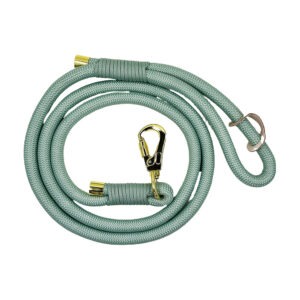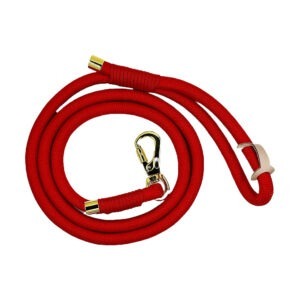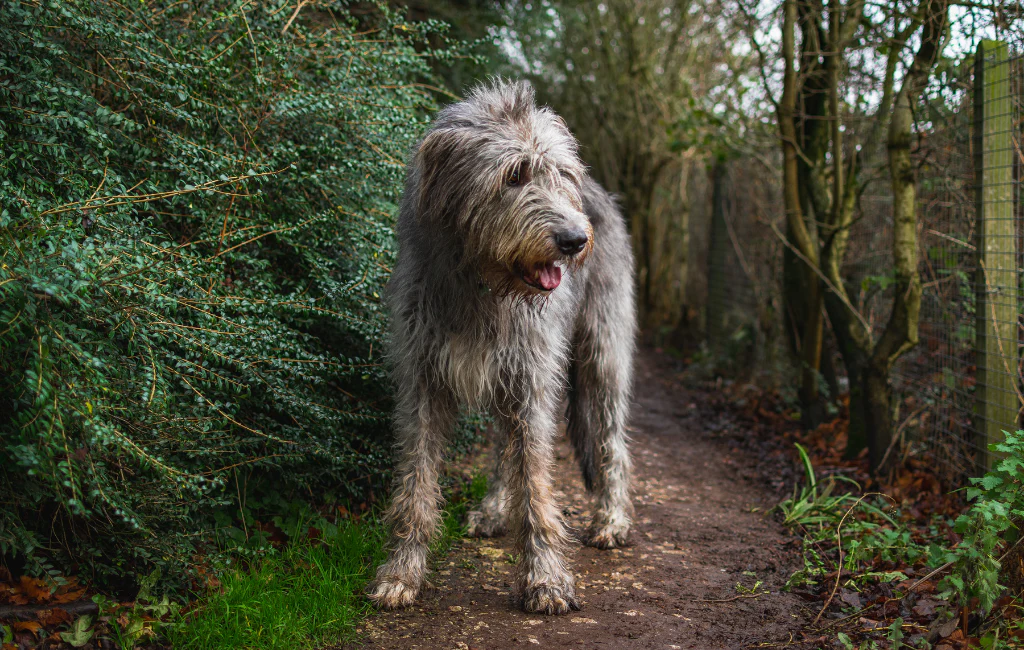Introduction
In the realm of majestic canine breeds, the Scottish Deerhound and the Irish Wolfhound stand as towering figures, both literally and figuratively. These breeds, steeped in rich history and cultural significance, have captured the hearts of dog enthusiasts worldwide. This article delves into the fascinating world of these two breeds, unraveling their mysteries and showcasing their unique characteristics. Whether you are a prospective dog owner, a canine aficionado, or simply curious about these noble creatures, this exploration offers a comprehensive understanding of what makes the Scottish Deerhound and the Irish Wolfhound so special.
The Scottish Deerhound and the Irish Wolfhound, often mistaken for each other due to their strikingly similar appearances, are indeed distinct breeds with their own unique stories. Originating from the rugged landscapes of Scotland and Ireland, respectively, these breeds have been revered for centuries for their prowess in hunting and their dignified demeanor. Today, they are cherished not just for their historical roles but also for their gentle nature and companionship.
As we embark on this journey, we will compare and contrast these breeds in various aspects, including their historical backgrounds, physical attributes, temperaments, and care requirements. Our goal is to provide a thorough and engaging insight into the Scottish Deerhound and Irish Wolfhound, helping you understand which breed might be the right fit for your lifestyle and home environment.
Some of our latest products...
Join us as we explore the enchanting world of these gentle giants, where each turn reveals fascinating facts and heartwarming stories. From their towering stature to their serene personalities, the Scottish Deerhound and Irish Wolfhound are breeds that epitomize the beauty and nobility of the canine world.
Breed History and Origin
The Scottish Deerhound and the Irish Wolfhound, breeds of profound historical significance, have origins shrouded in the mists of time, deeply intertwined with the culture and folklore of their respective lands. This section delves into the rich tapestry of their histories, unraveling the journey from their ancient roots to their present-day status as beloved companions.
The Scottish Deerhound: A Royal Legacy
The Scottish Deerhound, known as the “Royal Dog of Scotland,” boasts a lineage that dates back to a time before recorded history. Believed to have been in Scotland since the 9th century, these dogs were bred for the formidable task of hunting the mighty Red Deer, a pursuit that required speed, strength, and endurance. The Deerhound’s prowess in this role earned it a place of honor among Scottish nobility. So esteemed was this breed that, for a time, ownership was restricted to the elite, a factor that nearly led to its extinction.
The breed’s survival through turbulent times is a testament to its enduring appeal. By the late 19th century, dedicated breed enthusiasts stepped in to preserve the Deerhound’s legacy. This period marked the beginning of the breed’s journey to other parts of the world, including America, where it was recognized by the American Kennel Club in 1886. Today, the Scottish Deerhound is celebrated not just for its historical significance but also for its gentle demeanor and graceful presence.
The Irish Wolfhound: From Myth to Majesty
The Irish Wolfhound’s story is one of legend and valor. Documented as far back as 391 A.D., these hounds were renowned for their hunting prowess, particularly against the now-extinct Irish Elk and the wolves that once roamed Ireland. Their effectiveness in these roles was so profound that they were instrumental in driving these species to extinction, which ironically led to a decline in the breed’s own numbers.
Like their Scottish counterparts, Irish Wolfhounds were highly valued by nobility and were often presented as royal gifts to foreign dignitaries, a practice that helped spread their fame across continents. The breed faced near extinction in the 19th century but was revived thanks to the efforts of dedicated breeders. The Irish Wolfhound, now recognized as the national dog of Ireland, stands as a symbol of strength and gentleness, a gentle giant revered for its calm and dignified nature.
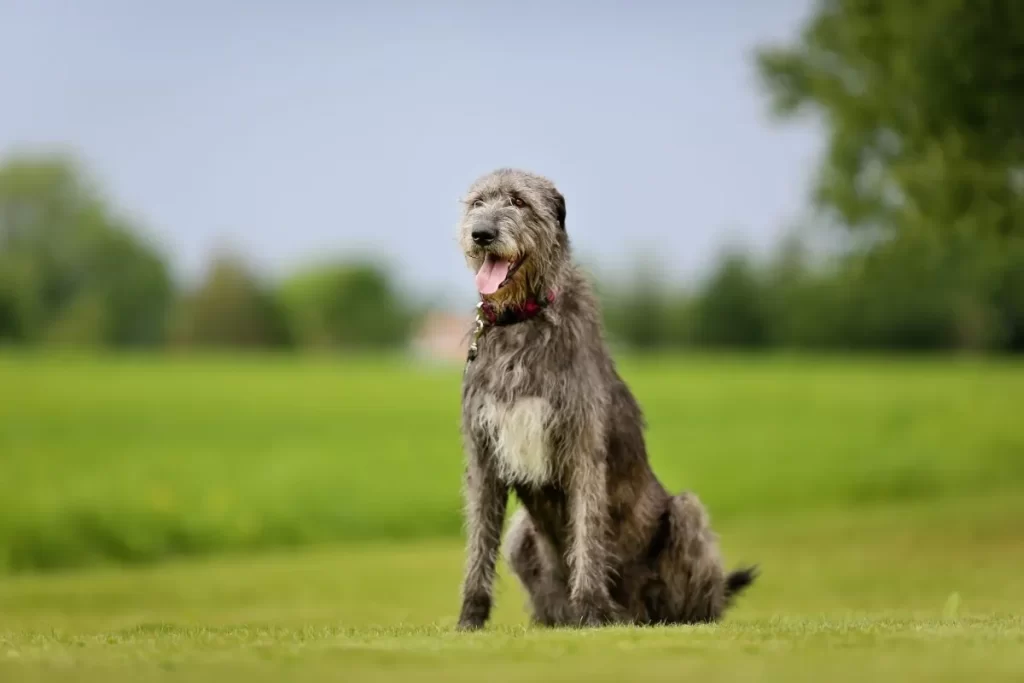
Physical Characteristics
In the world of dog breeds, the Scottish Deerhound and Irish Wolfhound are renowned for their impressive stature and distinctive appearance. This section explores the physical characteristics that set these breeds apart, providing a detailed comparison of their size, coat, color, and other defining features.
The Scottish Deerhound: Elegance in Size and Form
The Scottish Deerhound presents a picture of refined strength and graceful agility. Standing at 26 to 32 inches at the shoulder and weighing between 75 to 110 pounds, the Deerhound combines the speed and power necessary for its historical role in hunting large game. The breed is characterized by its wiry coat, which can be found in several colors, including gray, brindle, and fawn. The coat not only provides protection against harsh weather but also adds to the breed’s dignified appearance.
One of the most striking features of the Scottish Deerhound is its deep chest and long, lean body, reminiscent of the Greyhound but larger and more robust. The breed’s head is long and skull flat, with a slight rise over the eyes, giving it a unique and noble expression. The eyes are dark and gentle, reflecting the breed’s serene disposition. The ears are set high and folded back, and the tail is long and curved, completing the elegant silhouette of this majestic breed.
The Irish Wolfhound: A Towering Presence
The Irish Wolfhound, often regarded as the tallest of all dog breeds, commands attention with its sheer size. Males typically stand at least 32 inches tall, with females not far behind, and can weigh anywhere from 90 to 140 pounds. This breed’s size is a testament to its historical role in hunting large and formidable prey.
The Irish Wolfhound’s coat is also wiry and rough to the touch, providing insulation and protection. The breed’s coat comes in a variety of colors, including gray, brindle, black, and white. The Wolfhound’s overall appearance is one of power and endurance, with a muscular build and a commanding stance. The head is long and broad, with a pronounced stop and a beard that adds to its distinguished look. The eyes are large and dark, exuding a gentle yet alert expression, and the ears are small and carried back against the head.
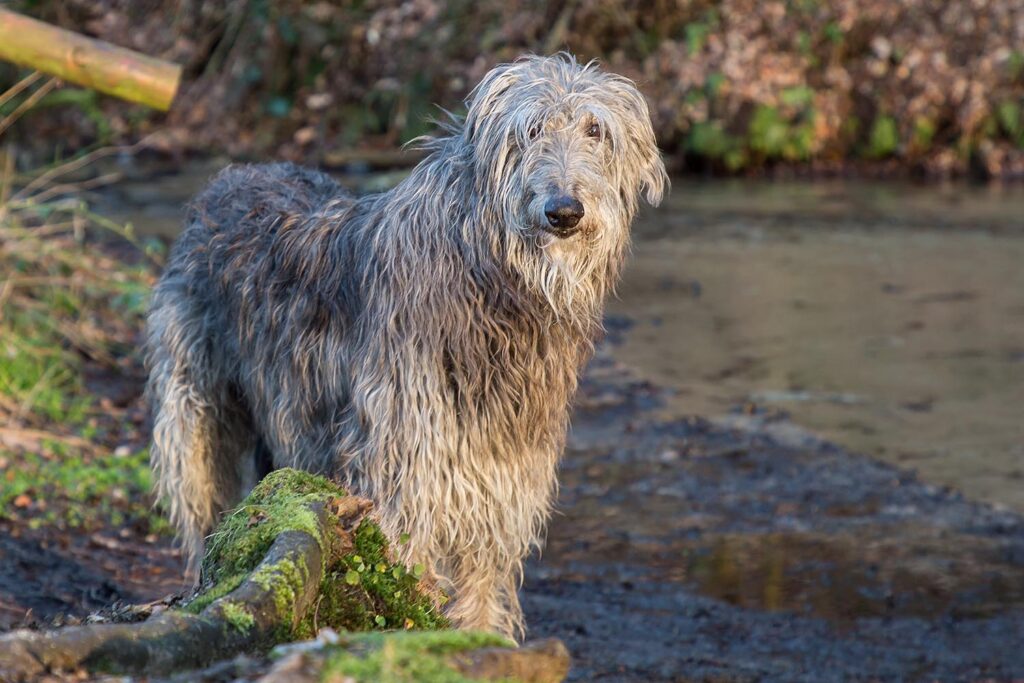
Temperament and Personality
Beyond their striking physical presence, the Scottish Deerhound and Irish Wolfhound are equally admired for their temperaments and personalities. This section delves into the behavioral traits of these breeds, offering insights into their nature and how they interact with their human families and surroundings.
The Scottish Deerhound: Gentle and Dignified Companions
The Scottish Deerhound is often described as a gentle giant, embodying a serene and dignified temperament. Despite their size and hunting heritage, these dogs are known for their calm and friendly demeanor. They are affectionate with their families, showing a quiet and loving nature that makes them excellent companions. The Deerhound is not typically a guard dog; their approach to strangers is more of polite curiosity than suspicion or aggression.
In the home, the Scottish Deerhound is laid-back and adaptable, content to lounge and be part of family activities. They do, however, require regular exercise to maintain their health and happiness. Their independent streak means they can be selective listeners, but with consistent, positive training methods, they respond well and can be quite obedient. The breed is also known for its sensitivity; they thrive in a peaceful environment and respond best to gentle handling and training techniques.
The Irish Wolfhound: Calm and Courageous Giants
The Irish Wolfhound, despite its formidable size and history as a hunter, is a breed marked by a calm and gentle disposition. These dogs are known for their patience and kindness, making them wonderful family pets. They are particularly good with children, displaying a protective yet gentle nature. Like the Deerhound, the Irish Wolfhound is not an ideal guard dog, as they tend to greet strangers with a friendly demeanor rather than suspicion.
In terms of personality, the Irish Wolfhound is often described as a thoughtful and intelligent breed. They are loyal to their families and can form strong bonds with their owners. While they enjoy being part of family activities, they also appreciate quiet time and can often be found taking a peaceful nap. Exercise is important for this breed, but they are generally more laid-back compared to the Deerhound. Training should be approached with patience and consistency, as the Wolfhound can be independent but is always eager to please.
Health and Lifespan
Understanding the health and lifespan of the Scottish Deerhound and Irish Wolfhound is crucial for prospective owners. This section addresses the common health issues, average lifespan, and care strategies to ensure the well-being of these noble breeds.
The Scottish Deerhound: Health Considerations and Care
The Scottish Deerhound, with an average lifespan of 8 to 11 years, is generally a healthy breed, but like all large dogs, it is prone to certain health conditions. One of the primary concerns is bloat or gastric torsion, a life-threatening condition that requires immediate veterinary attention. Owners should be aware of the symptoms and preventive measures, such as feeding smaller, more frequent meals and avoiding exercise right after eating.
Another concern for Deerhounds is heart disease, particularly cardiomyopathy, which is common in large breeds. Regular veterinary check-ups and monitoring for symptoms like fatigue, coughing, or difficulty breathing are essential. Additionally, bone and joint health is a priority, given the breed’s size and active nature. Conditions like osteosarcoma (bone cancer) and hip dysplasia can occur, so maintaining a healthy weight and providing joint supplements can be beneficial.
Preventive care, including regular exercise, a balanced diet, and routine vet visits, plays a vital role in the health and longevity of the Scottish Deerhound. Mental stimulation and a stress-free environment also contribute to their overall well-being.
The Irish Wolfhound: Lifespan and Health Challenges
The Irish Wolfhound typically has a shorter lifespan, averaging 6 to 9 years. As with the Deerhound, bloat is a significant concern, and similar preventive measures should be taken. Heart disease, particularly dilated cardiomyopathy, is also a common issue in Irish Wolfhounds. Regular cardiac evaluations and monitoring for symptoms are crucial for early detection and management.
Bone and joint health is a concern for the Irish Wolfhound as well, with conditions like hip dysplasia and osteosarcoma being relatively common. Ensuring a balanced diet, appropriate exercise, and regular veterinary check-ups are key to managing these risks. Additionally, owners should be aware of the breed’s susceptibility to certain eye conditions, such as cataracts and progressive retinal atrophy, and ensure regular ophthalmological exams.
The Irish Wolfhound’s large size and gentle nature require a commitment to their physical and emotional health. A loving, nurturing environment, combined with attentive care and regular veterinary visits, can help maximize their quality of life.
Training and Behavior
Training and managing the behavior of large breeds like the Scottish Deerhound and Irish Wolfhound requires understanding, patience, and consistency. This section explores the training needs, common behavioral issues, and effective strategies to address them for both breeds.
Training the Scottish Deerhound: A Gentle Approach
The Scottish Deerhound, known for its independent nature, can sometimes present a challenge in training. They respond best to positive reinforcement techniques, such as praise, treats, and play, which encourage cooperation rather than force. Consistency is key in training Deerhounds; they benefit from a routine that balances discipline with their need for independence.
One common behavioral issue in Deerhounds is their strong prey drive. This instinct can lead to chasing small animals or moving objects. Early socialization and training are crucial to manage this behavior. Recall training, although challenging, is essential, especially in open spaces. Leash training is also important to ensure safety during walks.
Deerhounds are sensitive dogs, and harsh training methods can be counterproductive. They respond well to calm and gentle guidance. Activities that stimulate their mind and body, like scent work or agility, can be effective in keeping them engaged and well-behaved.
Training the Irish Wolfhound: Patience and Consistency
Training an Irish Wolfhound requires a patient and consistent approach. Despite their size, they are sensitive and respond well to positive reinforcement. Harsh or punitive methods can damage the trust between the dog and owner. Establishing leadership with kindness and consistency is the key to training this breed.
Irish Wolfhounds can be more laid-back than Deerhounds, but they still require early socialization and obedience training. They are generally good-natured but can be stubborn at times. Consistent training sessions, kept short and engaging, can help maintain their interest.
Like Deerhounds, Irish Wolfhounds have a prey drive, and training them to manage this instinct is important. Recall training is essential, as is leash training for safe outings. Given their size, teaching them not to jump or lean on people is also important for safety.
Both breeds benefit from early exposure to different environments, people, and other animals. This helps in developing well-rounded behavior and reduces the likelihood of anxiety or aggression. Training should be an ongoing process throughout the dog’s life to reinforce good behavior and deepen the bond between the dog and owner.
Living Conditions
The living conditions suitable for the Scottish Deerhound and Irish Wolfhound are pivotal to their well-being and happiness. This section explores the ideal environments for these breeds, considering their size, exercise needs, and temperament.
The Scottish Deerhound: Space and Exercise Needs
The Scottish Deerhound thrives in environments where it has ample space to move and exercise. Due to their large size and active nature, Deerhounds are best suited to homes with large, securely fenced yards where they can run and play. However, with adequate daily exercise, they can adapt to various living situations, including more suburban settings.
Exercise is crucial for the Deerhound’s physical and mental health. They require regular, moderate exercise to maintain their muscle tone and prevent boredom. Activities like long walks, gentle runs, and opportunities to roam in a safe, enclosed area are ideal. Despite their size, Deerhounds are relatively adaptable and can enjoy indoor life, often being calm and laid-back when inside the home.
When it comes to climate, the Scottish Deerhound’s coat provides good insulation, making them well-suited to cooler temperatures. However, they can adapt to various climates as long as they have a cool, shaded place to rest during hotter months.
The Irish Wolfhound: Adapting to Family Life
Like the Deerhound, the Irish Wolfhound needs space to accommodate its large size. A home with a spacious yard is ideal, but with sufficient daily exercise, they can also adapt to smaller living spaces. The key is to provide them with regular opportunities to stretch their legs and engage in moderate exercise.
Irish Wolfhounds are known for their laid-back nature indoors. They are content to lounge and be part of family activities, making them surprisingly good companions for apartment living, provided their exercise needs are met. They are gentle and patient with children and can coexist well with other pets, especially when raised together.
In terms of climate, the Irish Wolfhound’s thick coat is more suited to cooler weather, but they can live comfortably in various environments with appropriate care. In warmer climates, ensuring they have access to shade and water, and avoiding exercise during the hottest parts of the day, is essential.
Interaction with Other Pets
The Scottish Deerhound and Irish Wolfhound, with their hunting heritage and large size, have specific dynamics when it comes to interacting with other pets. This section explores how these breeds typically relate to other animals and provides guidance for potential multi-pet households.
The Scottish Deerhound: Social Dynamics and Considerations
The Scottish Deerhound, known for its gentle and friendly nature, generally gets along well with other dogs. Their sociable demeanor allows them to integrate into a household with existing pets, particularly if they are introduced at a young age. However, due to their strong hunting instincts, caution is advised when introducing Deerhounds to smaller pets, such as cats or rabbits. While they can learn to coexist peacefully with familiar small animals, their prey drive may be triggered by unfamiliar small animals, especially those that run or scurry.
Socialization is key in shaping a Deerhound’s interactions with other pets. Early and consistent exposure to various animals, along with positive reinforcement training, can help mitigate potential predatory behavior. It’s also important to supervise interactions with smaller pets and provide separate spaces if needed.
The Irish Wolfhound: Gentle Giants Among Other Pets
The Irish Wolfhound’s calm and patient temperament makes them well-suited to living with other pets, including other dogs. They are typically non-aggressive and can form close bonds with canine companions. Similar to the Deerhound, the Wolfhound’s interactions with smaller pets should be approached with caution due to their sighthound nature and prey drive.
Early socialization and training are crucial for Irish Wolfhounds to ensure they understand appropriate behavior around other animals. They can coexist peacefully with cats and other small pets, especially if raised together from a young age. However, always monitor their interactions and provide safe spaces for smaller pets to retreat if necessary.
In multi-pet households, both the Scottish Deerhound and Irish Wolfhound benefit from clear boundaries and consistent training. Understanding each pet’s personality and needs is essential in fostering harmonious relationships among them.
Cost of Ownership
Owning a Scottish Deerhound or Irish Wolfhound involves a significant financial commitment. This section provides an overview of the costs associated with these breeds, covering aspects such as food, grooming, healthcare, and insurance.
The Scottish Deerhound: Budgeting for a Gentle Giant
The cost of owning a Scottish Deerhound extends beyond the initial purchase price of the puppy. One of the most significant ongoing expenses is food. Given their size, Deerhounds require a substantial amount of high-quality dog food, which can be a considerable monthly expense. It’s important to feed them a diet appropriate for their age, size, and activity level to maintain their health.
Grooming costs for Deerhounds are relatively moderate. Their wiry coat requires regular brushing to prevent matting and tangling, and occasional professional grooming may be necessary. However, they are not high-maintenance in terms of grooming compared to some other breeds.
Healthcare costs are another important consideration. Routine veterinary care, vaccinations, and preventive medications for parasites are standard expenses. Additionally, potential health issues specific to the breed, such as heart conditions and joint problems, may require special veterinary care or surgeries, which can be costly.
Pet insurance is a wise investment for Deerhound owners. It can help mitigate the expenses of unexpected illnesses or injuries, ensuring that your dog receives the best possible care without a significant financial burden.
The Irish Wolfhound: Understanding the Financial Commitment
The Irish Wolfhound, being one of the largest dog breeds, incurs substantial costs in feeding. Their diet should be carefully managed to support their size and energy levels, and high-quality food tailored to giant breeds is recommended.
Grooming needs for Irish Wolfhounds are similar to those of Deerhounds. Regular brushing is necessary, and occasional professional grooming sessions can help maintain their coat’s condition. While they don’t require extensive grooming, their size can make the task more challenging and time-consuming.
Healthcare expenses for Irish Wolfhounds can be significant, especially as they age. They are prone to certain health issues that may require specialized veterinary care, including heart and joint conditions. Regular check-ups, preventive care, and potential treatments for breed-specific health problems should be factored into the budget.
Insurance for Irish Wolfhounds is highly recommended. Given their potential health issues and the cost of veterinary treatments for a large breed, insurance can provide peace of mind and financial protection.
Real-life Experiences
Gaining insights from real-life experiences of Scottish Deerhound and Irish Wolfhound owners can be invaluable for understanding what it’s like to live with these breeds. This section shares stories and anecdotes that highlight the joys and challenges of owning these majestic dogs.
The Scottish Deerhound: Stories from the Heart
Owners of Scottish Deerhounds often speak of their deep bond with these gentle giants. One Deerhound owner, Sarah, shares her experience: “Living with Max has been a journey of discovery. His calm demeanor and affectionate nature have made him an integral part of our family. He loves his long walks but is equally content curling up by the fireplace. His sensitivity and intelligence never cease to amaze us.”
Another Deerhound enthusiast, Mark, recounts his experience with the breed’s hunting instincts: “I learned early on that Lily’s prey drive is strong. We’ve worked on training, but I always keep her on a leash during walks. Despite this, her gentle and loving personality shines through, making her a wonderful companion.”
The Irish Wolfhound: Tales of Loyalty and Love
Irish Wolfhound owners often emphasize the breed’s gentle nature and loyalty. Emma, an Irish Wolfhound owner, shares: “Finn has a presence that’s hard to ignore. He’s incredibly patient with our kids and has a calmness that’s soothing. He’s large, yes, but his demeanor is that of a gentle soul. He’s become my loyal shadow around the house.”
John, who has owned several Irish Wolfhounds, says, “Their size can be daunting, but their personality is what wins everyone over. They’re not just pets; they’re family members. The hardest part is their shorter lifespan. Saying goodbye never gets easier, but every moment with them is worth it.”
Conclusion
As we conclude our comprehensive journey through the world of Scottish Deerhounds and Irish Wolfhounds, it’s clear that these breeds are not just dogs, but living legends that bring a touch of majesty and historical richness into our lives. Their towering presence, coupled with their gentle and noble spirits, makes them more than mere pets; they are loyal companions and irreplaceable members of the families lucky enough to share their lives with them.
The Scottish Deerhound and Irish Wolfhound, each with their unique heritage and characteristics, offer a special experience for dog owners. From the Deerhound’s serene elegance and independent spirit to the Wolfhound’s calm demeanor and patient strength, these breeds embody a perfect blend of grandeur and gentleness. They teach us the value of patience, the importance of gentle leadership, and the joy of unconditional love.
Owning a Scottish Deerhound or Irish Wolfhound comes with its challenges, including their need for space, exercise, and specific health care considerations. However, the rewards of their companionship far outweigh these challenges. The journey with these breeds is one filled with learning, growth, and countless moments of awe at their grace and beauty.
For those considering bringing a Scottish Deerhound or Irish Wolfhound into their home, this exploration hopefully serves as a valuable guide and resource. Remember, the decision to own one of these magnificent dogs should be made with careful consideration of their needs and your ability to meet them. In return, they offer a lifetime of loyalty, affection, and an unparalleled bond.
In the end, the Scottish Deerhound and Irish Wolfhound stand as testaments to the extraordinary relationship between humans and dogs. They remind us of our connection to nature, history, and the animal kingdom. For those who walk alongside these gentle giants, life is an adventure shared with a truly remarkable companion.
Frequently Asked Questions
What is the main difference between a Scottish Deerhound and an Irish Wolfhound?
The main difference lies in their size and history. The Irish Wolfhound is generally taller and heavier than the Scottish Deerhound. While both have hunting backgrounds, the Deerhound was primarily used for deer hunting in Scotland, whereas the Wolfhound was bred for hunting wolves and large game in Ireland.
Are Scottish Deerhounds and Irish Wolfhounds good with children?
Yes, both breeds are known for their gentle nature and tend to be good with children. However, due to their large size, supervision is recommended, especially with younger children.
How much exercise do these breeds need?
Both breeds require regular exercise to maintain their health. The Scottish Deerhound needs moderate exercise, while the Irish Wolfhound’s exercise needs are slightly less intense. Daily walks and opportunities to run in a safe, enclosed area are ideal for both.
Can these breeds adapt to living in an apartment?
While they prefer a home with a spacious yard, both breeds can adapt to apartment living if they receive adequate daily exercise. However, their large size should be considered in terms of space.
What are the common health issues in these breeds?
Common health issues include bloat, heart conditions, and joint problems like hip dysplasia. Regular veterinary check-ups and a healthy lifestyle are important for prevention and early detection.



